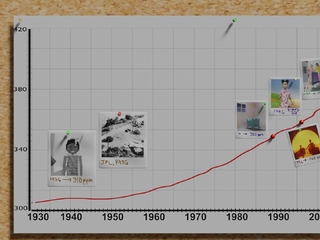The global pandemic has been a difficult time, but you may have wondered:
Have we at least put the brakes on climate change by staying home and not driving so much?
Unfortunately, not.
In fact, carbon dioxide (CO2) in the atmosphere has been increasing just the same as ever.
It’s something we can measure from space, using satellites NASA's Orbiting Carbon Observatory-2, or OCO-2.
OCO-2 is constantly measuring the carbon dioxide levels in the atmosphere, and as it turns out, there was barely any shift during the pandemic.
But how can that be? Didn’t we all stop driving and flying?
Yes, but …
1. Driving picked back up after the first few months of the pandemic.
2. Power plant emissions were unchanged (and in some cases, higher
So global 2020 emissions of CO2 were actually only 5-6% lower than in 2019.
Those 2020 emissions still added to the total amount of CO2 in the atmosphere.
But there is a useful insight about climate change that we can take away from the pandemic:
There was the tiniest dip in CO2 levels in the atmosphere during the first and strongest stay-home orders in spring 2020. This indicates the sort of sustained action needed to really put the brakes on climate change (while also doing it in a way that’s not as disruptive).
Want to learn more? Check out:
1. this article about CO2 during the pandemic
2. this article explaining how OCO-2 was used to study CO2 levels






